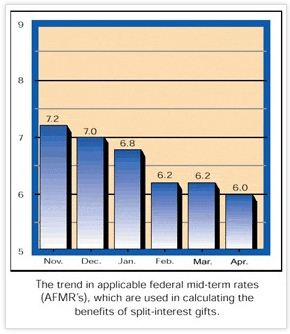In the 1970s and ’80s, charities had a pretty clear picture of the “The Face of America’s Elderly.” The typical planned giving prospect was a member of the Depression era and could be approached as such.
Those persons born during the first decades of the last century were deeply affected by the economic and social turmoil of the Great Depression, which formally began in 1929 and continued until World War II. The Depression generation witnessed a true and extended stock market crash, runs on the banks and other financial institutions, mass mortgage and loan foreclosures with thousands of homes, farms, and businesses lost in the process.

This group was deeply affected by what they saw and experienced during the so-called “hard times.” As a result, planned and major gift officers in the 1970s and ’80s knew quite a bit about the perceptions of most persons in the 65-75 age range. As a group they tended to be frugal and thrifty savers with a self-reliant, practical outlook on life. They were very cautious when it came to entering into transactions involving large purchases or transfers of assets, including charitable remainder trusts, gift annuities, and other irrevocable deferred gifts. The bequest was the planned gift of choice for this generation.
Dealing with a cohesive and somewhat predictable group had marketing advantages for gift planners during the latter decades of the 20th Century. Today, however, gift planners are facing a more multifaceted pool of prospective donors. We need to understand the changing nature of those who are in the traditional age range for planned gifts—those 65-75 today and ten years hence.
In 2001 the typical 65-year-old donor household is comprised of a couple whose children are grown. Both husband and wife are healthy, active, and while many are still working, most are anticipating retiring in the next few years. They were born in 1936 and have little or no firsthand knowledge of the Depression. They may well have childhood memories of World War II, but were not yet teenagers when the War ended. Their peak earning years were in the late 1980s and the 1990s and thus enhanced by the economic prosperity of that time period.
The 75-year-old donor household is more likely to include a widow or widower, but may also include a couple. These households are primarily made up of retirees living on Social Security and income from savings and investments. This group is likely to have childhood memories of the Depression. As a result, they tend to be somewhat more conservative economically than those who are now in the 65-year-old age range.
As a group, though, these 75-year-olds’ lives were shaped by the Second World War. Many joined their older siblings in the Armed Forces or entered the nation’s workforce as part of the War effort. An unprecedented number of women were entering the workforce during this period. With the availability of the GI Bill, the ranks of college and university attendees swelled in the post-World War, which in turn created a highly educated workforce—and a more sophisticated group of consumers in the 75 and older age range.
Back to the future
The composition of donor households will continue to undergo significant changes during the coming decade. In 2011 the first wave of baby boomers will turn 65. This will mark the beginning of a significant increase in the 65-74 age group, which actually declined in the 1990s. Meanwhile, the number of those 75 to 85 years of age will be stagnant or decline as a result of a severe dip in U.S. birthrates in the 1930s. The oldest of the old, the over-85 age group, will also continue to be among the most rapidly growing segments of the population.
The most successful gift planners will recognize the differences between these groups and plan accordingly. While every donor is an individual, oftentimes it will be advantageous to create generational groupings for marketing purposes. This may in turn affect what your message is and how it is sent.
For example, by 2011 the vast majority of 65-year-olds will have fully embraced the next generation of interactive, user-friendly, Web-based communications technology. In the meantime, however, older donors may find comfort in, and be receptive to, more traditional forms of communication and be more responsive to formats they are familiar with, such as printed materials, live seminars, or personal visits.

